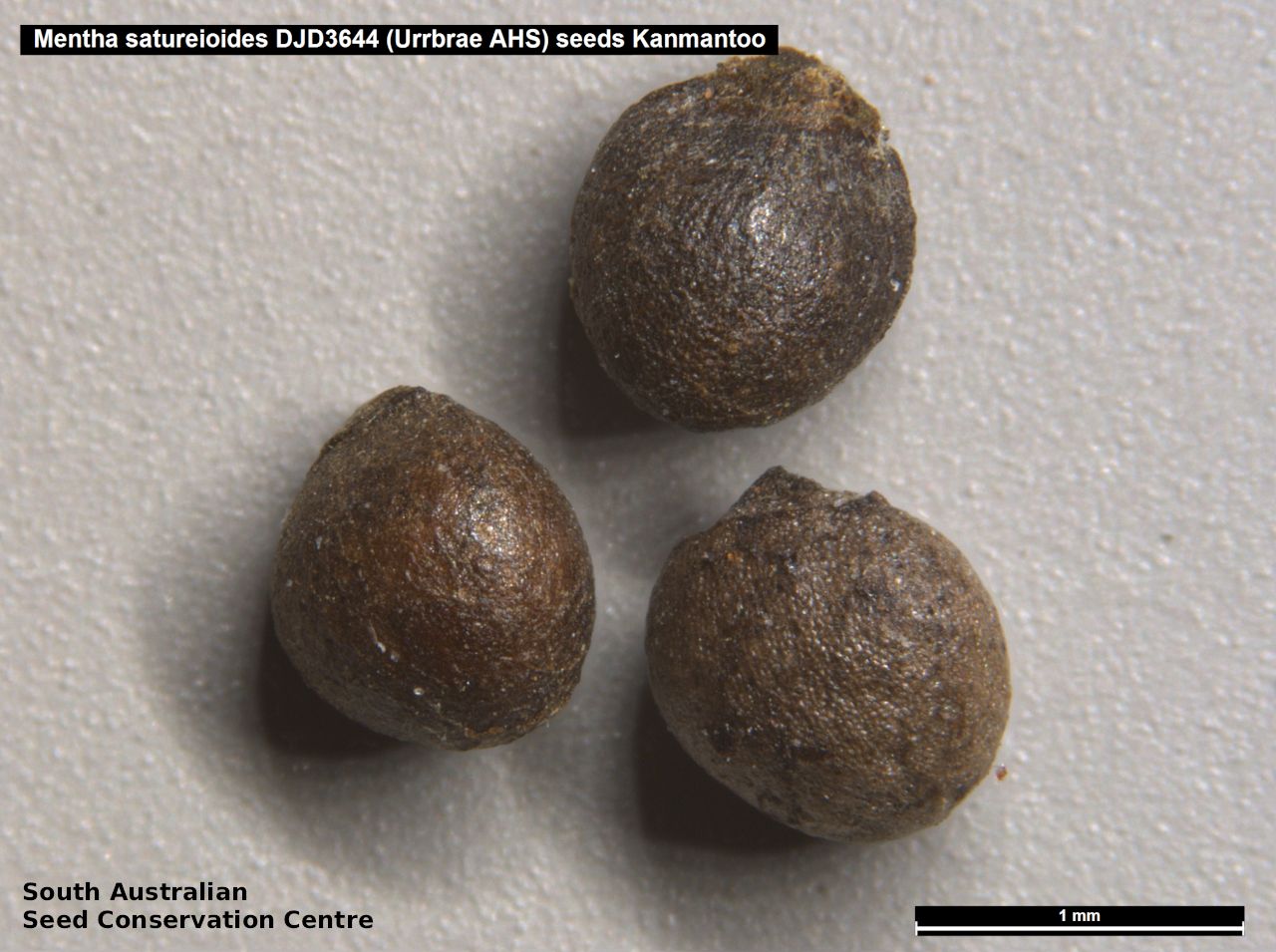















Botanical art
Common names
Creeping Mint
Native Pennyroyal
Etymology
Mentha, a Latin name of a Greek nymph who was turned into a mint plant. Satureioides means resembling the genus Satureia, (which is from the Latin 'satureia', meaning savory).
Distribution and status
Found scattered from the Gammon, Flinders and Mount Lofty Ranges, southern Eyre Peninsula and the upper South-east in South Australia, growing on heavy, seasonally wet soils. Also found Queensland, New South Wales and Victoria. Native. Rare in South Australia. Common in the other States.
Herbarium regions: Flinders Ranges, Eyre Peninsula, Northern Lofty, Yorke Peninsula, Southern Lofty, South Eastern, Green Adelaide
AVH map: SA distribution map (external link)
Plant description
Rhizomatous, often mat-forming perennial herb with ascending or prostrate branches; often rooting at lower nodes; glabrous, or covered with short spreading hairs. Leaves narrowly elliptical to 35 mm long and 7 mm wide; surfaces glabrous;, apex obtuse or rounded with margin entire. Inflorescence, in clusters with 3 tubular white or pink flowers in axils of distal leaves. Flowering from November to March. Fruits are small clusters of papery brown capsules in axis of leaves. Seeds are dark brown to black ovoid seed to 1.2 mm long and 0.7 mm wide, with a slightly wrinkled surface. Seed embryo type is spatulate.
Seed collection and propagation
Collect seeds between February and May. Collect individual capsules that are turning brown and contain hard seeds or break off whole stems with numerous brown capsules. Place the capsules in a tray and leave to dry for a week. Then rub the capsules gently with a rubber bung to dislodge the seeds from the capsules. Use a sieve to separate the unwanted material. Some seeds will be empty. Use an aspirator to siphon off the lighter, non-viable seeds from the heavier good seeds. Store the seeds with a desiccant such as dried silica beads or dry rice, in an air tight container in a cool and dry place. From one collection, the seed viability was low, at 15%.
| Location | No. of seeds (weight grams) | Number of plants | Date collected | Collection number Collection location | Date stored | % Viability | Storage temperature |
|---|---|---|---|---|---|---|---|
| BGA MSB | 5,800 (1.92 g) 5,800 (1.92 g) | 200+ | 9-May-2007 | DJD789 South Eastern | 1-Aug-2007 | 15% | +5°C, -18°C |
| BGA | 123 (0.038 g) | 30 | 2-May-2017 | DJD3290 Murray | 1-Nov-2017 | N/C | -18°C |
| BGA | 800 (0.29 g) | 12 | 18-Apr-2017 | DJD3644 Murray | 1-Nov-2017 | 60% | -18°C |
| BGA | 190 (0.057 g) | 31-Jul-2018 | Kaiser Stuhl Murray | 24-Apr-2019 | N/C | -18°C | |
| BGA | 340 (0.17 g) | 27-Sep-2019 | Kanmantoo Murray | 24-Jun-2020 | N/C | -18°C | |
| BGA | 700 (0.205 g) | 31-May-2019 | Kaiser Stuhl Murray | 24-Jun-2020 | 80% | -18°C | |
| BGA | 1,600 (0.630 g) | 20+ | 1-Jul-2020 | TST1447 Murray | 28-Jun-2021 | 85% | -18°C |
| BGA | 1,700 (0.605 g) | 13-Aug-2021 | TST1447 Murray | 7-Jul-2022 | 85% | -18°C |
Number of plants: This is the number of plants from which the seeds were collected.
Collection location: The Herbarium of South Australia's region name.
% Viability: Percentage of filled healthy seeds determined by a cut test or x-ray.